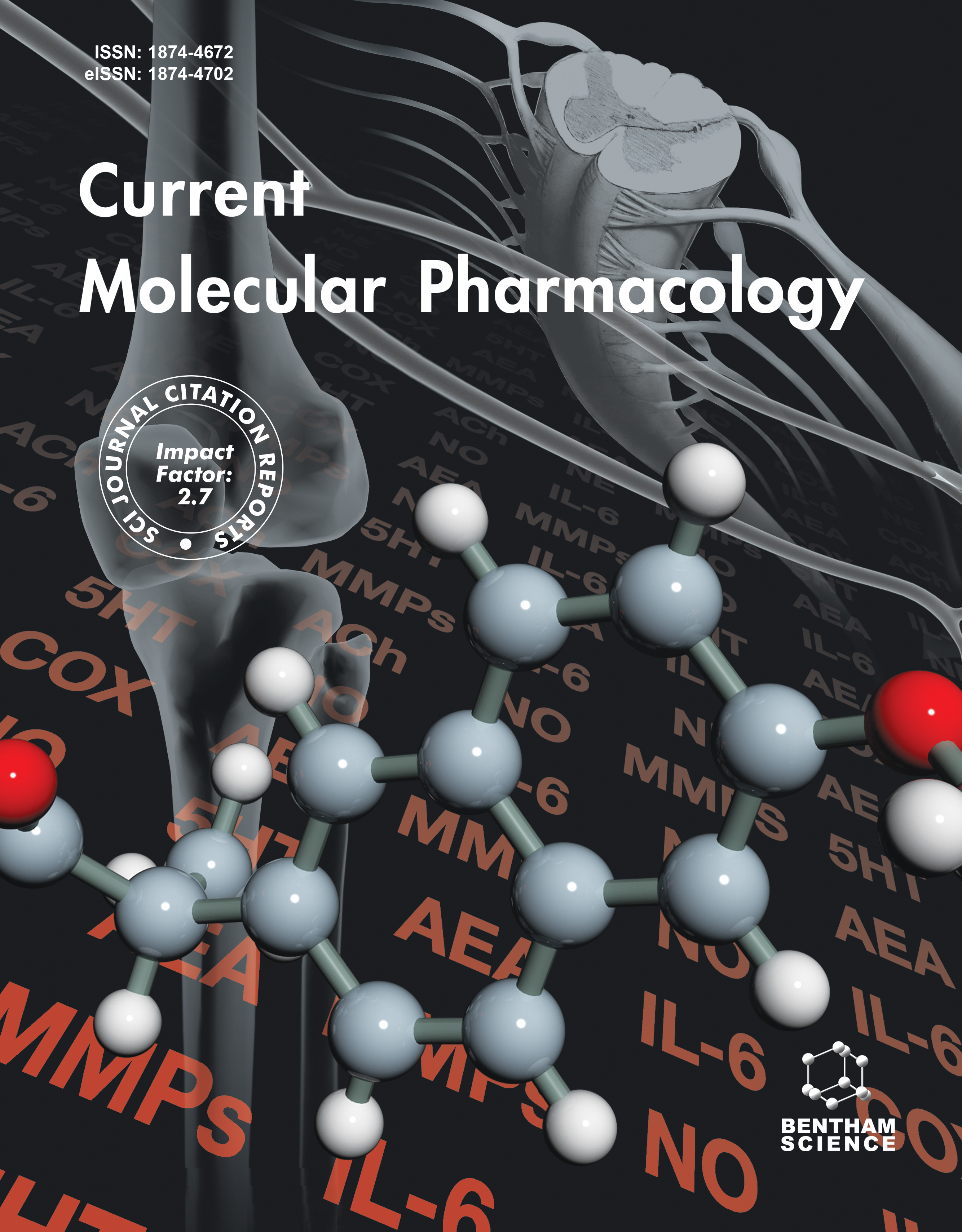- Home
- A-Z Publications
- Current Molecular Pharmacology
- Previous Issues
- Volume 13, Issue 2, 2020
Current Molecular Pharmacology - Volume 13, Issue 2, 2020
Volume 13, Issue 2, 2020
-
-
Therapeutic Targets for the Treatment of Comorbidities Associated with Epilepsy
More LessAuthors: Kinjal Gangar and Lokesh K. BhattOne of the most common neurological disorders, which occurs among 1% of the population worldwide, is epilepsy. Therapeutic failure is common with epilepsy and nearly about 30% of patients fall in this category. Seizure suppression should not be the only goal while treating epilepsy but associated comorbidities, which can further worsen the condition, should also be considered. Treatment of such comorbidities such as d Read More
-
-
-
AdipoRon: A Novel Insulin Sensitizer in Various Complications and the Underlying Mechanisms: A Review
More LessBackground: AdipoRon is the first synthetic analog of endogenous adiponectin, an adipose tissue-derived hormone. AdipoRon possesses pharmacological properties similar to adiponectin and its ability to bind and activate the adipoR1 and adipoR2 receptors makes it a suitable candidate for the treatment of a multitude of disorders. Objective: In the present review, an attempt was made to compile and discuss t Read More
-
-
-
Detailed Molecular Biochemistry for Novel Therapeutic Design Against Nipah and Hendra Virus: A Systematic Review
More LessAuthors: Shreya Bhattacharya, Shreyeshi Dhar, Arundhati Banerjee and Sujay RayBackground: Nipah virus (NiV) and Hendra virus (HeV) of genus Henipavirus are the deadliest zoonotic viruses, which cause severe respiratory ailments and fatal encephalitis in humans and other susceptible animals. The fatality rate for these infections had been alarmingly high with no approved treatment available to date. Viral attachment and fusion with host cell membrane is essential for viral entry and is the most es Read More
-
-
-
Vasorelaxant Effect of Novel Nitric Oxide-Hydrogen Sulfide Donor Chalcone in Isolated Rat Aorta: Involvement of cGMP Mediated sGC and Potassium Channel Activation
More LessAuthors: Amol Sherikar, Rakesh Dhavale and Manish BhatiaBackground and Objective: Recently, nitric oxide (NO) and hydrogen sulfide (H2S) donating moieties were extensively studied for their role in the vasculature as they are responsible for many cellular and pathophysiological functioning. The objective of the present study is to evaluate novel NO and H2S donating chalcone moieties on isolated rat aorta for vasorelaxation, and to investigate the probable mechanism of action. Meth Read More
-
-
-
The Protective Effect of Cilostazol in Genotoxicity Induced by Methotrexate in Human Cultured Lymphocytes
More LessAuthors: Abeer M. Rababa'h, Samah A. Hussein, Omar F. Khabour and Karem H. AlzoubiBackground: Methotrexate is an antagonist of folic acid that has been shown to be genotoxic to healthy body cells via induction of oxidative stress. Cilostazol is a phosphodiesterase III inhibitor and a potent antioxidant drug. Objective: To evaluate the potential protective effect of cilostazol on methotrexate genotoxicity. Methods: The genotoxic effect of methotrexate by measuring the frequency of chromosomal aberrations (C Read More
-
-
-
miR-4319 Suppresses the Growth of Esophageal Squamous Cell Carcinoma Via Targeting NLRC5
More LessAuthors: Xiao Hu, Min Wang, Lei Cao, Li Cong, Yujie Gao, Jianwei Lu, Jifeng Feng, Bo Shen and Delin LiuBackground: The functions of microRNAs (miRNAs) in cancer progression have been recognized in recent years. However, the role of miR-4319 in esophageal squamous cell carcinoma (ESCC) remains unclear. Objective: We aimed to investigate the biological roles of miR-4319 in ESCC progression and the associated mechanisms. Methods: Real-time PCR was performed to examine the levels of miR-4319 in ESCC cell line Read More
-
-
-
Discovering Therapeutic Protein Targets for Bladder Cancer Using Proteomic Data Analysis
More LessBackground: Bladder cancer accounts for almost 54% of urinary system cancer and is the second most frequent cause of death in genitourinary malignancies after prostate cancer. About 70% of bladder tumors are non-muscle-invasive, and the rest are muscle-invasive. Recurrence of the tumor is the common feature of bladder cancer. Chemotherapy is a conventional treatment for MIBC, but it cannot improve the survival Read More
-
Most Read This Month
Article
content/journals/cmp
Journal
10
5
false
en


